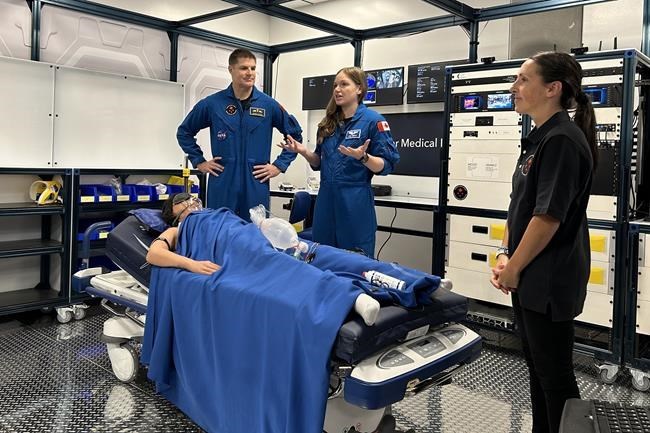LONGUEUIL, Que. — Canadian astronaut Jeremy Hansen says he agrees with NASA's plan to delay a highly anticipated mission to the moon and back until September 2025, saying that such decisions take courage.
Hansen said Monday he and NASA crewmates Reid Wiseman, Victor Glover and Christina Koch were happy that officials put off the Artemis II moon mission originally scheduled for this November. The delay, he added, will buy the team time to resolve technical issues with the Orion spacecraft — including with its heat shield — before the ship's first crewed flight.
"Now that we have those extra 10 months, if we do find something else we have more opportunity to make changes if we want to," Hansen told reporters at the Canadian Space Agency headquarters south of Montreal.
"The mindset is we will find many things we want to change for the Artemis program; we won't change them all for our mission, but we will identify them and many of them will be earmarked for changes in Artemis III and IV."
Artemis II involves a lunar flyby during which Orion is to perform a figure-eight manoeuvre around the far side of the moon before returning to Earth. The craft completed an unmanned mission around the moon — Artemis I — in late 2022.
Hansen said that he and his colleagues talk regularly about the risks of space flight, but he said he is confident that NASA will take all necessary mitigation measures before his team is sent into orbit.
"Every space mission has risks — launching and landing are of course the biggest risks," Hansen said. "It's the second time we're flying this vehicle (Orion), the first time with humans, so it's still a very new program, so there's some elevated risks."
Orion will be travelling through several orbital debris zones during the eight-day mission from Earth to the moon and back.
"Risks like hitting something in space, you can't just do a quick U-turn and come back," Hansen said. "So no matter what, we have to live with what we have, once we decide to leave Earth."
The mission to the moon will serve as a precursor to Artemis III — delayed to September 2026 — which is expected to land the first woman and the first person of colour on the moon. That mission will mark the first time astronauts will walk on the moon in more than 50 years.
Hansen was visiting CSA headquarters where media were shown how the team is preparing for the Artemis II mission. He was joined by Jenni Gibbons, who was named as Hansen's backup in November and would be pressed into service if he is unable to make the voyage.
The demonstrations included physical training sessions for astronauts in space, and examples on how medical assistance is delivered during deep space missions. As well, officials discussed the development of sa国际传媒rm3, a new robotic arm being built for the NASA-led Gateway lunar station.
Also on display was some of the Canadian food that will accompany Hansen on the mission: shrimp curry with rice, maple cream cookies, wild keta salmon bites and maple syrup.
This report by The Canadian Press was first published Feb. 5, 2024.
Sidhartha Banerjee, The Canadian Press



